World's longest sea bridge to open after 9 years of construction
The major infrastructure project aims to connect the economic hubs.
LONDON -- Chinese officials are set to unveil the world’s longest sea bridge this week after nine years of construction work, advancing the country's interest in connecting three major regions.
Around 26 miles, the Hong Kong-Zhuhai-Macau Bridge consists of a main bridge over Chinese mainland waters, with attached border checkpoints and roads connecting the Hong Kong Special Administrative Region, Zhuhai City in Guangdong, China, and the Macao Special Administrative Region.
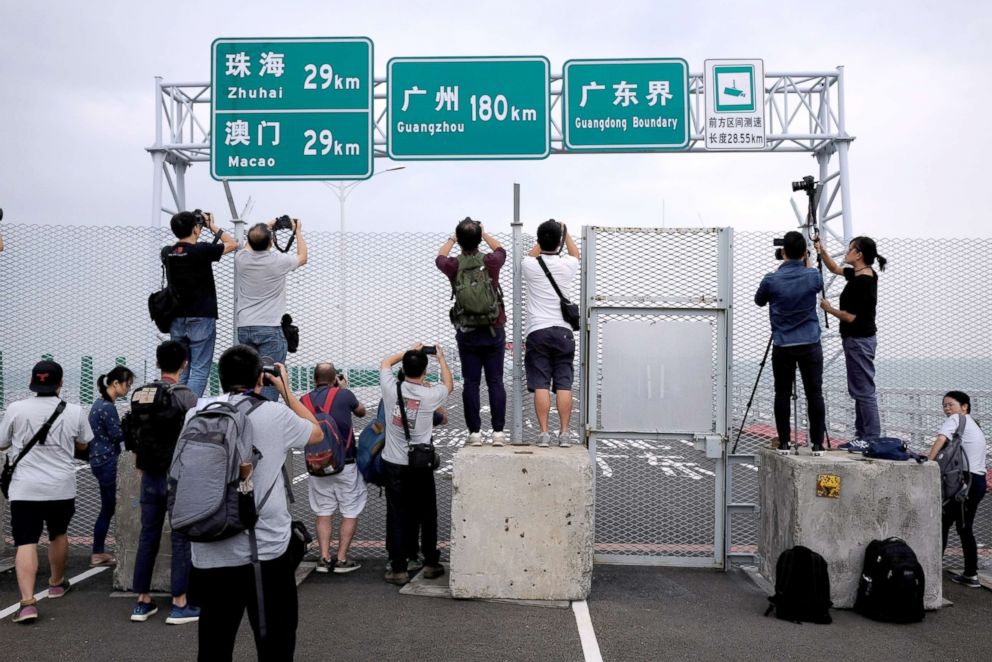
The bridge will include 22 miles of a three-lane highway from northern Lantau to the Western Shore of the Pearl River Estuary, and a 4.1 mile tunnel between two artificial islands along the way to prevent the disruption to sea traffic. The bridge is lined with towers topped by dolphins, Chinese Knots and ship sails to symbolize the three different regions, according to the South China Morning Post.
The total cost of the project is $20 billion, according to The Guardian newspaper.
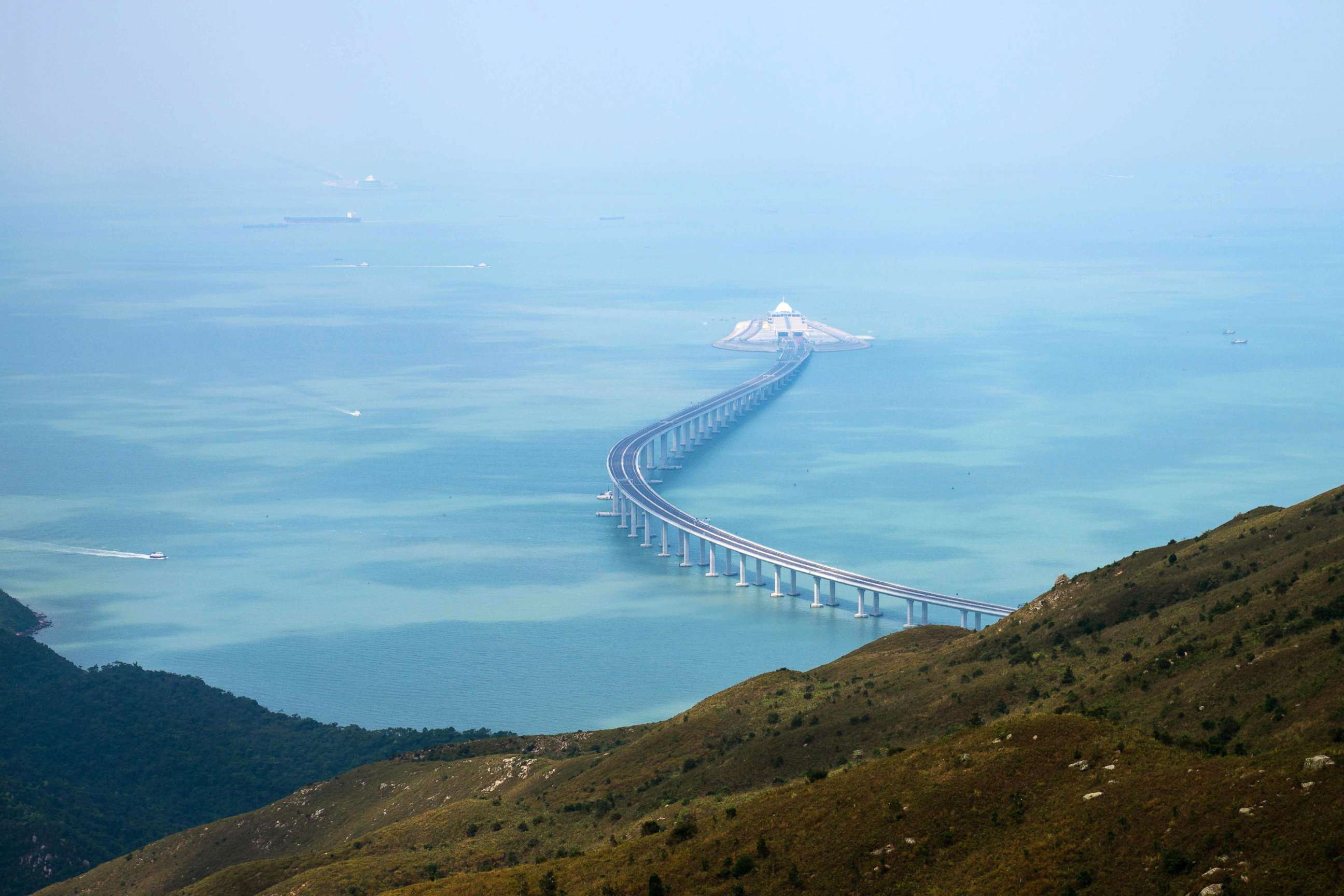
The Hong Kong-Zhuhai-Macau Bridge will bring the Chinese mainland economic hub of the West Bank of the Pearl River Delta to within a 3-hour drive of Hong Kong.

Steve Tsang, the Director of the China Institute at the School of Oriental and African Studies in London, said the bridge is part of a larger Chinese investment strategy. “This is part of the ‘Greater Bay Area’ Project, which includes Hong Kong and Macau with the development of the Pearl River bay area,” he told ABC News. “It is about making Hong Kong an integral part of what is supposed to be a new dynamic economic and innovative engine of China.”
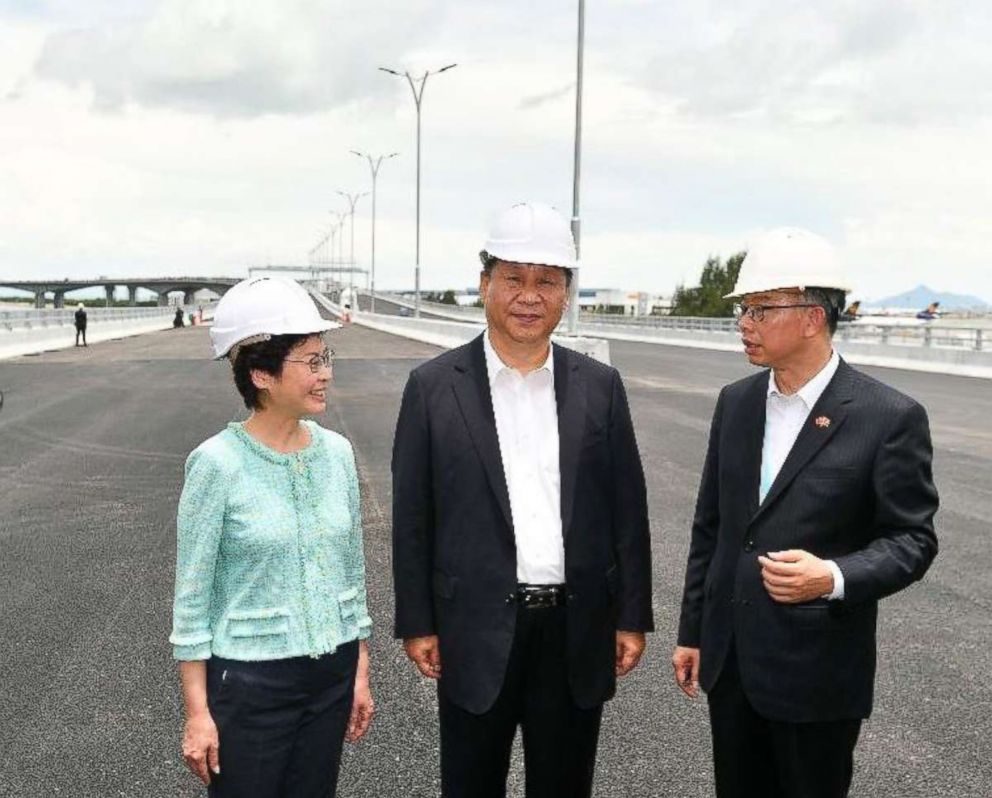
Chinese President Xi Jingping visited the bridge in July of last year, and is expected to attend the opening ceremony on Tuesday.
“Xi Jinping's visit to the region also reinforces Hong Kong's role in the cross-border economy approach that China is developing,” said Dr. Winnie King, a specialist in Chinese international political economy at the University of Bristol. “There's a clear symbolic value of being the world's longest bridge re[garding] nationalism and state-building.”
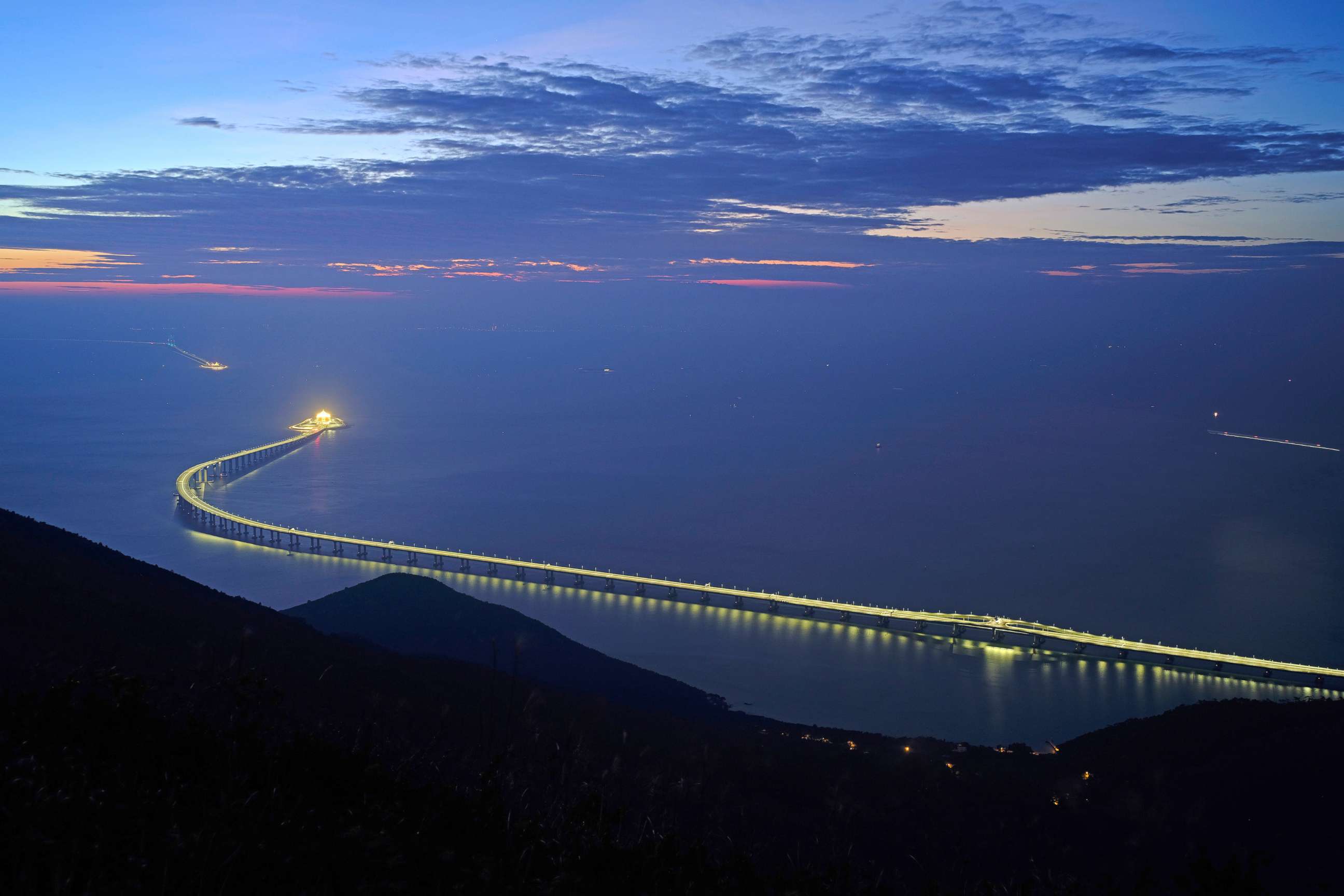
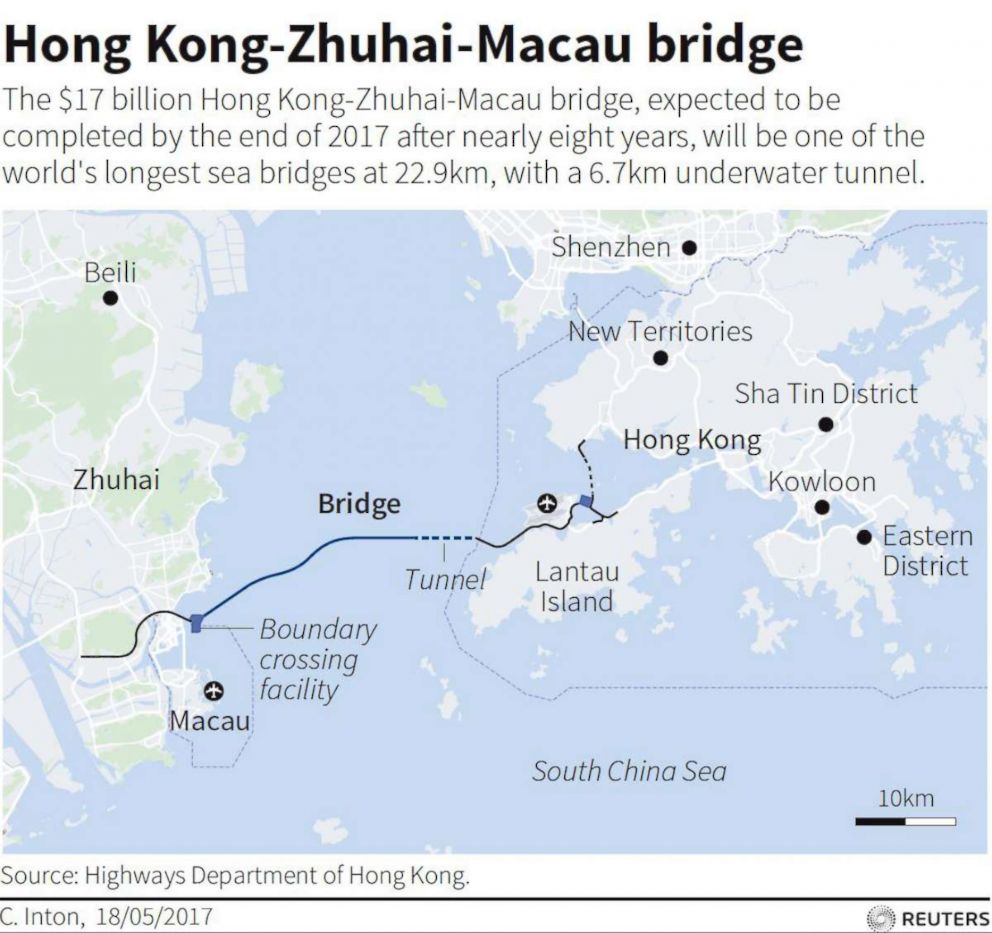
But the reasons behind the investment may not be purely economic, as the bridge will bring Hong Kong, which has a separate system of governance, closer into Beijing’s sphere of influence.
“By making Hong Kong an integral part of the Greater Bay area, it will bring Hong Kong closer to mainland China, notwithstanding the official commitment for the ‘one country, two systems’ model,” said Tsang. “The more Hong Kong is integrated into mainland China, the less is there a case for it to be given very special treatment.”




